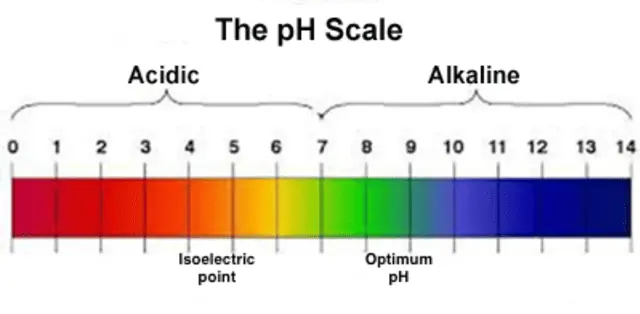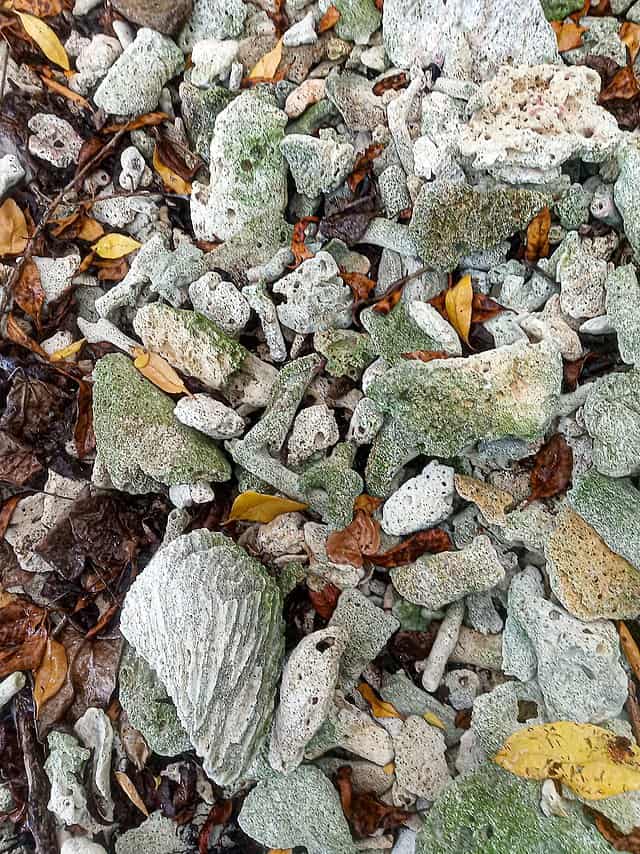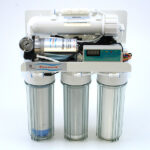** This post contains affiliate links. **
It’s time for everyone’s favorite topic: water quality! Today we will be learning about your fish tank pH and supporting kH, also known as alkalinity.
What is pH?
Fish tank pH is a measure of the hydrogen ion concentration in a solution. The pH scale is modeled on the inverse log (base 10) of hydrogen ions in a solution (aka your tank or pond water). The inverse log function indicates that as the hydrogen ion concentration increases, your pH will decrease. With a base 10, every 1.0 movement along the scale is a 10 times increase in the hydrogen ion concentration.
Hydrogen ions play an important role in many chemical and biological functions. Most importantly, they are involved with ion movement across the gills. This is how waste is removed from the fish’s blood and other ions can enter the body, such as minerals involved in bone formation and organ function. Therefore, for healthy fish, it is critical that you know what pH is the best for your tank and maintain it with as little fluctuation as possible.
Some fish have a wide range of pH tolerance, while others have a very strict range. Koi and goldfish, for example, can tolerate a very wide range of “normal” pH, whereas many marine tropical fish have a very narrow tolerance. And what is normal for your tank or pond may be different from your neighbor’s or cousin’s and still be perfectly safe a healthy for your fish.
For fish with large pH ranges, stabilization is key. Swinging from one pH to another quickly can kill your fish since they cannot acclimate to the changing conditions fast enough and will therefore get stressed easily. Check out our water quality ranges for common pet fish species or ask your aquatic veterinarian for more information.

How do I test my fish tank pH?
Many of our clients purchase master test kits which include: ammonia, nitrite, nitrate, low and high pH. The low and high range pH can sometimes be confusing for fish tank owners. Essentially, if your low range pH is at the very high end of its range, switch to the high end. If your high end pH is at the very low end of its range, switch to the low end. You may be interested in an electronic probe instead; just be sure to keep it calibrated! This is a great collection of parameters to start with, but what about KH?
What is KH?
For those of you unfamiliar with KH, KH measures carbonate ions in your water, which act as buffers. Buffers bind to free hydrogen ions and keep them out of solution by converting them to another compound. Since your pH is a direct measure of [H+] in your system, KH directly impacts pH.
(For those of you who are confusing this with GH, or total hardness: GH measures the amount of calcium and magnesium in your water. Although this may be a component of your KH, such as calcium carbonate, which is both a source of calcium and a carbonate group, they are separate parameters entirely.)
So, if your KH levels are too low, all the H+ your fish discharge due to metabolic processes can build up and severely alter your fish tank pH. Adequate KH levels will keep your pH consistent throughout the day, regardless of what your fish and other organisms, including your biofilter, are doing. Knowing your tanks KH is an essential component to any fish keeper’s database. There are simple tests available that will make your testing a true “master kit.”
As with all test kits, please read the instructions carefully before using. Store all of your regents indoors and replace them every year. And don’t forget to write down your values so you do not forget them! Creeping pH is one of the easiest things to lose track of over time.
What is the best level of fish tank KH?
A fish tank KH value of >50 mg/L is adequate, but >100 mg/L is better.
How quickly your tank or pond uses up its KH depends on the biological activity of your system. As your fish and other aerobic organisms breathe, they release carbon dioxide (CO2) into the water. This reacts with water (H2O) to form carbonic acid (H2CO3). This further breaks down into H+ and HCO3- (bicarbonate), and finally H+ and CO3 2- (carbonate).
Expect your fish tank’s pH to decrease faster with more fish in a smaller space
Now, all of these compounds must exist in equilibrium, so the rate of reaction and net direction will determine what state all of these formulas occur within your tank or pond. The more carbon dioxide you pump in, the more hydrogen ions will be produced. This leads to a decrease in pH with the more biologic activity you try to squeeze into a small space. And don’t forget, algae and plants will contribute to this at night as well, when they switch from photosynthesis to cellular respiration.
Your source water could be the cause of your fish tank pH issues
If your fish tank KH is low, test your source water KH. Some city and well systems have low KH coming in and will need buffers to be manually added to your system to maintain adequate levels. Keep an eye on your pH when manually adding buffers in order to make sure your pH will not change too much. Slow and steady is the goal for any pH changes.
Know your species tolerance ranges
You may have species, like some South American cichlids, who like a lower KH range between 50-100 mg/L. This will require regular testing and fussing with your levels to ensure everything fits their requirements. Do your research before you buy any fish to make sure you can provide them a comfortable home!
How can I improve my fish tank’s KH?
You could add a commercial aquarium buffer product, but you do not have to. A small amount of baking soda will easily bring up your pH to around an 8.0, where as some soda ash, a common additive in swimming pools, will raise it to 7.0 to 7.5. Keep in mind that buffers do not exist forever and will be used up by your system. These additives will require adding every water change to maintain healthy levels.
For long term support of your fish tank pH and KH, consider crushed coral or oyster shells. Oyster shells are a common feed additive for poultry and cheap and easy to find. Crushed coral is used for maintaining coral tanks to provide adequate calcium carbonate to build their homes. Both of these products will help maintain a consistent pH and KH for weeks to months, depending on the biologic activity of your tank or pond. One note: rinse them thoroughly before adding or your clear tank will look like chalk soup.


I really need a pH of #, how can I get my water to stay there?
When it comes to maintaining a specific fish tank pH, you are at the mercy of your source water. If your tap levels are coming in at 8.0-8.5 and you need a pH around 7.0, you will be fighting your water with every water change.
Before you go on a pH crusade, ask yourself if you really need a specific fish tank pH, or the internet is telling you this is the only way to raise your fish right? If you are unsure about what pH your fish actually need, consult your aquatic veterinarian to ensure you are not wasting your time and money on something your fish would be okay without.
If you are looking at a lower fish tank pH range, you are best to start with reverse osmosis (RO) water. This is water passed through a very fine filter to remove almost everything other than the water molecules. It will have a pH of almost 7.0 exactly and a KH of ZERO. You will need to add in the right buffers (depending on your species) to create the best water you can. This takes considerable time and repeat testing to achieve, but for some picky species, there is no other way. If you cannot keep up with this maintenance for your fish’s life, we highly recommend adopting a different species.


Pingback: The Nitrogen Cycle – Aquatic Veterinary Services
Pingback: Top 10 Mistakes All New Fish Owners Make – Aquatic Veterinary Services
Pingback: Top 10 Mistakes New Fish Owners Make – #4 – Aquatic Veterinary Services
Pingback: Fish Bowl Syndrome – Aquatic Veterinary Services
Pingback: Fish Tank Upgrade – Aquatic Veterinary Services
Any recommendations for buffers if kH is low?
It depends on what pH your fish need. There are many commercial formulas available.
Hi there, very useful explanation! I am just starting out, currently cycling a planted tank, no fish yet. I have very soft water 0 kh and negligible gh and a pH around 6.8. How can I increase kh and gh without changing ingredients the pH? I’m finding lots of advice online but all of it increases pH. I’m terrified of adding fish and the low kh allows a drastic pH swing which kills them all, I’d feel terrible.
Any advice would be most gratefully recieved
Many thanks,
Jenny
You will change the pH no matter what you use to increase your KH. This is normal, but needs to be done slowly. With any buffer that you use, it is critical that you test regularly and start with very small doses and titer up.